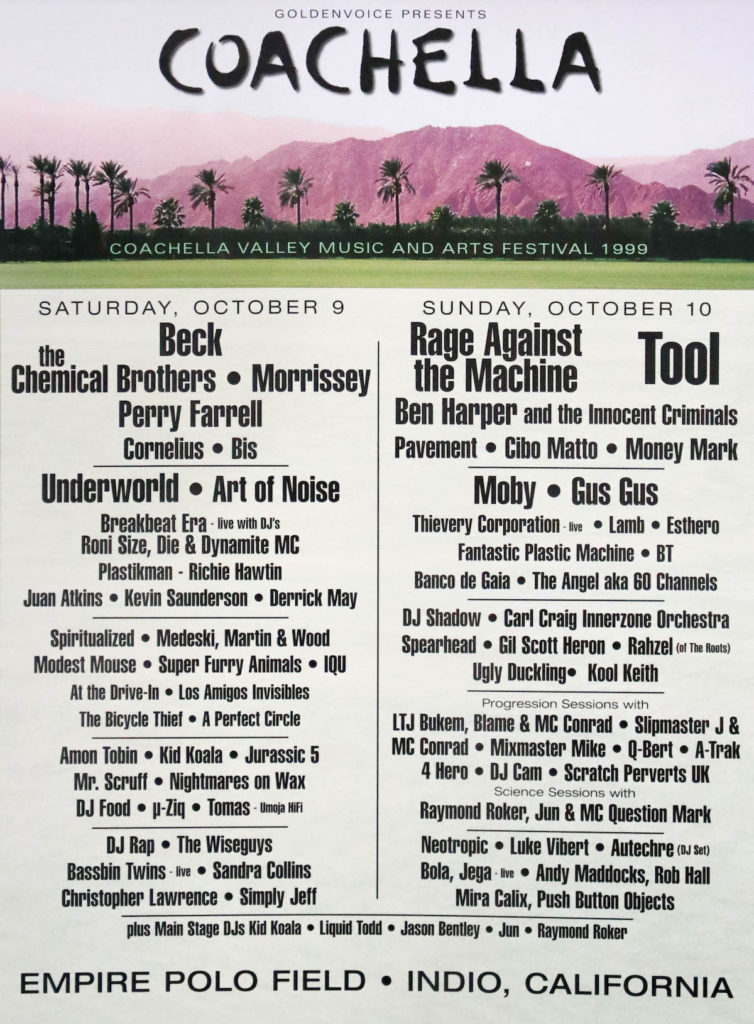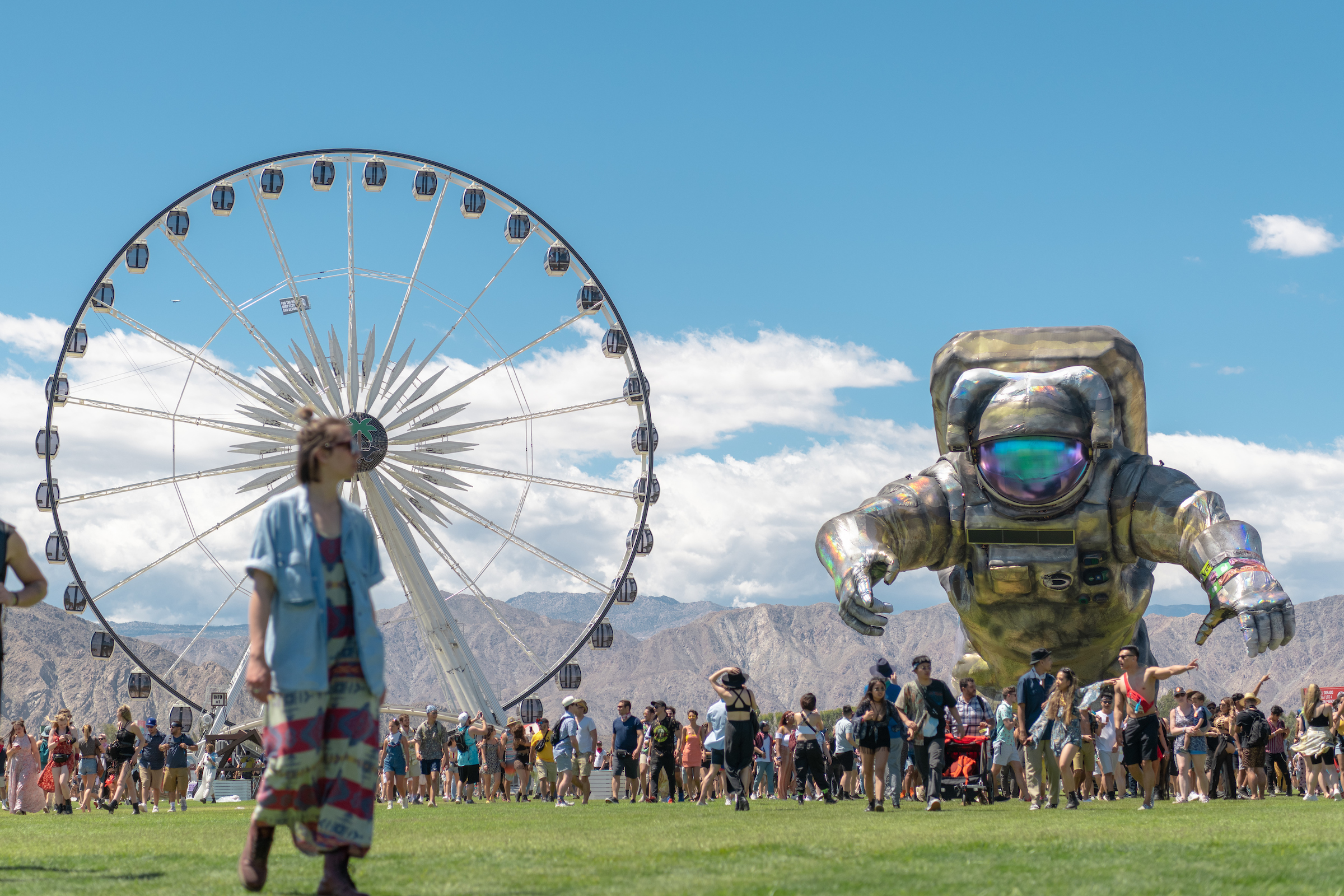To hear the chatter on social media, you would think the whole world had planned to go to Coachella this (or next) weekend. For the last ten years, many have enjoyed “Couchella” via the Coachella Valley Music and Arts Festival’s live stream. This year, that experience is replaced with Coachella: 20 Years in the Desert, a documentary that has been seven years in the making culled from over a petabyte (or a million gigabytes) of footage, according to the film’s director and producer, Chris Perkel.
This is the not the first Coachella documentary. There is also the Drew Thomas-directed two-hour concert film, simply titled Coachella, that was released in January 2006. But it was in the years after that film that Coachella truly established itself internationally as the festival where major musical moments take place every year.
Whether you’re a Coachella die-hard, a selective festival-goer, or have never been before, Coachella: 20 Years in the Desert is one hour and forty-three exciting minutes of cultural observations through the lens of the festival. There is no focus on festival fashion or the celebrity and influencer presence, which is the main coverage the festival receives in the media. Nor is there input from the actual festival goers, original or new. But in many instances, it’s better than the real thing without having to swelter in 100+ degree heat, battle desert winds, standstill traffic, or parking in a lot that’s miles away from the polo field. And that Tupac hologram footage is just as mind blowing as it was when it first came out in 2012.
In celebration of Coachella: 20 Years in the Desert, here’s 20 revelations we learned from the film.
1. Gary Tovar, the founder of Coachella’s promoter Goldenvoice, went to jail for marijuana trafficking. Tovar had a marijuana import side business that helped fund Goldenvoice’s early shows.
2. Pearl Jam’s request to Goldenvoice to find a venue that was not administered by Ticketmaster is the reason the they discovered the Empire Polo Club in Indio, requiring a space capable of hosting the band and its massive audience.
3. Anytime Goldenvoice’s CEO Paul Tollett told anyone he wanted to call the festival Coachella, he was met with resistance and strong urging against the name.
4. Coachella was announced the Monday following the disaster that was Woodstock 1999, but Goldenvoice was more focused on following in the the traditions of California’s iconic festivals: Monterey Pop, CalJam, and the US Festival.
5. In Coachella’s first year in 1999 over the weekend of October 9th and 10th— incidentally, the same weekend it has been postponed to this year—you could walk around the festival barefoot.

6. While the festival looked like a great success in 1999, they “lost $850,000 or maybe a million,” according to Tollett, who was personally banned from his bank and not allowed to even cash a check.
7. Live entertainment entity AEG, who purchased Goldenvoice, were the ones that suggested Goldenvoice revise Coachella again after a gap year in 2000.
8. Bauhaus’ original idea for their reunion at Coachella 2005 was to release actual bats, but as the band’s David J says in the film, you can’t have a bird release after 5:00 p.m. and under these circumstances, bats are considered birds, plus there is the “twin peril of rabies and batshit.” The band’s compromise was Peter Murphy arriving on the stage hanging upside down and performing the group’s signature song, “Bela Lugosi’s Dead,” inverted.
9. Danny DeVito waylaid Amy Winehouse behind the Gobi tent as she was walking onto the stage in 2007. Winehouse, who looks luminous during her performance of “Valerie,” stopped for a photo with DeVito.
10. In recent years, the biggest stars in music headline Coachella. Raymond Roker, the film’s executive producer and overarching narrator of the film, states that Madonna was really the first “star” to perform at the festival. More significantly, Madonna was not on the main stage, but in the Sahara, or “dance” tent, as the flyer delineated.
11. Rosanna Arquette personally asked Tollett to interview musicians at the festival. She got time with everyone from Paul McCartney and Roger Waters to Justice and Lauryn Hill. In the film she says it’s her favorite job she’s ever had.
12. Perry Farrell is ageless and has an endless supply of fitted black vests.
13. Interviewed in a black leather chair with a glossy grand piano in the background, Jason Bentley proclaims the birth of EDM as we know it arrived during Daft Punk’s performance in 2006.
14. The film reminds us through C-SPAN footage of Joseph Biden, then the democratic senator of Delaware, of his declaration that if he were the governor or the mayor, he would be passing new ordinances with stiff criminal penalties for anyone who held a rave and put everyone in jail.
15. There are many moments identified as significant for electronic dance music that happened at Coachella, including Tiësto performing on the main stage, which according to Insomniac Events’ Pasquale Rotella, pushed things forward.
16. A-Trak does the best job of emphasizing the importance of rap in the film, banging his fists against his thighs and proclaiming, “Rap is cool. There is nothing cooler than rap. Rap is the coolest music ever!!”
17. #Beychella has gone down as the biggest performance at Coachella to date, but as Roker points out in the film, from her originally scheduled performance in 2017 to the rescheduled one in 2018, major changes happened, not the least of which was the election of Donald Trump and the emergence of #metoo.
18. In later years, Coachella’s international musical reach continues to expand, which the film exemplifies with K-pop girl group Blackpink (Khalid fanboying over them is classic) and Latin rapper Bad Bunny, among others.
19. Moby, who is one of the frequent talking heads of the film, says what he likes about Coachella is you feel challenged by it.
20. Even Tollett didn’t know Prince was playing Coachella until three weeks before his performance in 2008. Footage from that performance closes the film.







